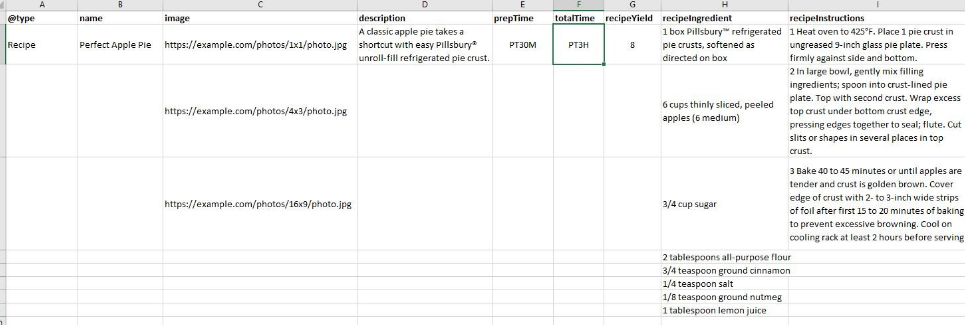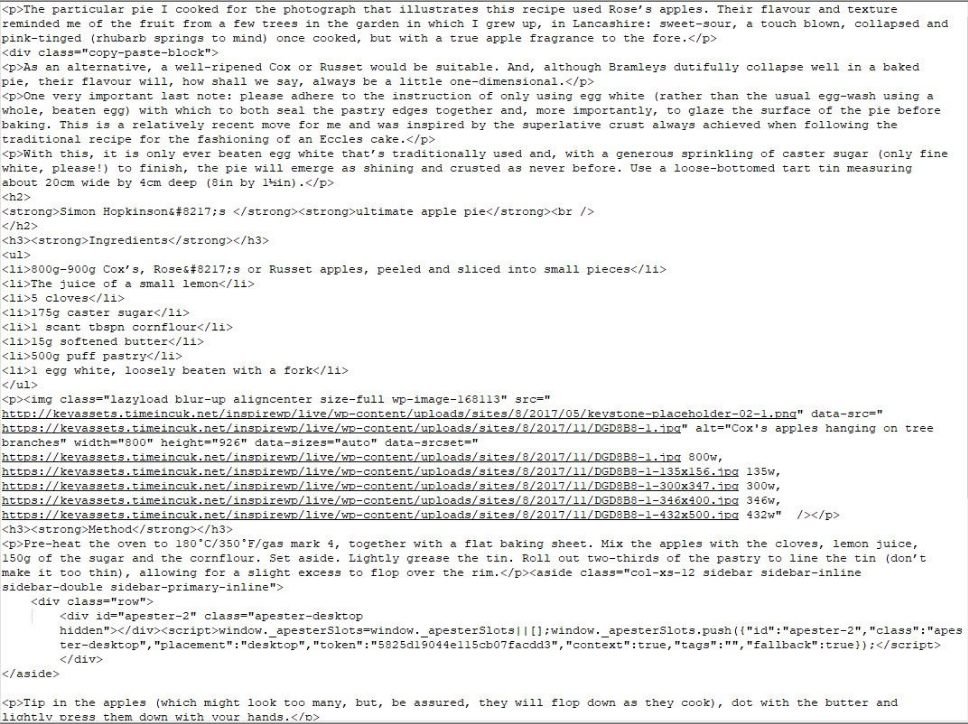The Holy Grail - Structured Data
29 Oct 2020
On first hearing the term 'structured data', one can be excused from yawning and glazing over. If you are a business owner or a marketeer, surely you don't need to hear about this?
As a matter of fact, it could be critical to your business and one of the most important things you do online. Whilst you don't need to know about the finer detail, you do need to understand the broader concept, in order to appreciate the benefits.
When you appreciate the benefits, you will be on a mission to ensure that it is implemented to the fullest extent.
To help explain, in layman’s terms, we will need to refer to Apple Pies, Excel spreadsheets and Google.
What have Apple Pies, Excel spreadsheets and Google got to do with it?
Most of us have some experience with Excel, so let's imagine a spreadsheet, nicely organised with column headings and all of our information in organised rows. We can filter on the columns and make charts from the data and we can name the worksheet with something relevant. Below is an example of one that will contain recipes for apple pie.

In a way, this is much like the way that your website might store information in its database. It lists in columns, the name, a description, the images, ingredients, cooking instructions cook time and prep time. We could add the recipe author, nutritional info, reviews and more if we wanted.
Now imagine taking your spreadsheet and merging all rows and columns into one cell. While we're doing this, let's delete the name from the worksheet.
All of the information is still there, but now it doesn't really mean anything and you can't do a lot with it other than search for some matching words or numbers.
This is what happens within your website. Nicely structured data is taken from a database and output in a non-structured way, as a jumble of HTML on your webpages. The result looks like this.

This is how Google and other search engines see your information, as a jumble of words, numbers and pictures with some instructions on what font to use or where to add a new paragraph, but no actual context. Consequently, when someone searches on Google, the results are pages that have matching words or numbers to your search query.
Accordingly, a standard result for a search for apple pie recipes will look like this - the page title, the URL and a snippet of text from the page.

How does structured data work?
Firstly, your information needs to fit into one of the recognised schemas. There are schemas for articles, products, books, events, jobs, videos, recipes plus a few more, and it's a growing list.
The name of the schema, is like the name of your Excel worksheet and it is recognisable by the search engines and immediately gives context and tells Google what the page is about.
Next come the schema categories, which are like column headings and then the values, which are the cell contents in each row. When implemented, the search engines will see this.

OK, this still doesn't exactly look interesting, but now the search engine can read all of the data in context and can format it accordingly. Searching in Google now will produce a result like the one below, which now includes an image, the rating, cook time and the calorie count.

Great, but what does that do for us?
It does a lot for you. Beside putting a bit more in the search engine results pages you could be seeing about a 30% increase in your Click Throughs from search.
Formatted results stand out, contain more relevant information and have an image, so obviously this type of result will encourage greater CTRs than standard listings. When searching for 'apple pie recipes', you will need to get beyond the first 180 results before you find any that aren't formatted with structured data. If you don't implement structured data, your search engine positions will inevitably be surrendered to competitors that do, as their results are more meaningful to Google and consequently, worthy of higher rankings (positions).
Added to this, there are other benefits, where Google is able to understand and work with results. Google is adding more features to search so that, for example, when searching for jobs, results are shown in tables with filtering on distance and salary.
Wait, there is one more bonus. At Google's discretion, they may choose to display a formatted result in a stand-out feature box, above the actual first result on Google search. This is known as Position Zero and is the Holy Grail of search results. Our apple pie search position zero result looks like the one below.
Only 12.3% of searches currently will get a P-Zero result returned but..

recent Google researching showed that their P-Zero results provided a 114% increase in click through's from search, over conventional number one position results. Structure data provides a significant commercial advantage to our clients.
The iCentric Agency specialize in advising, developing and supporting digital transformation software solutions for aspiring businesses.
You can read more about our agency and who we are here and more about our success stories at https://icentricagency.com/stories



